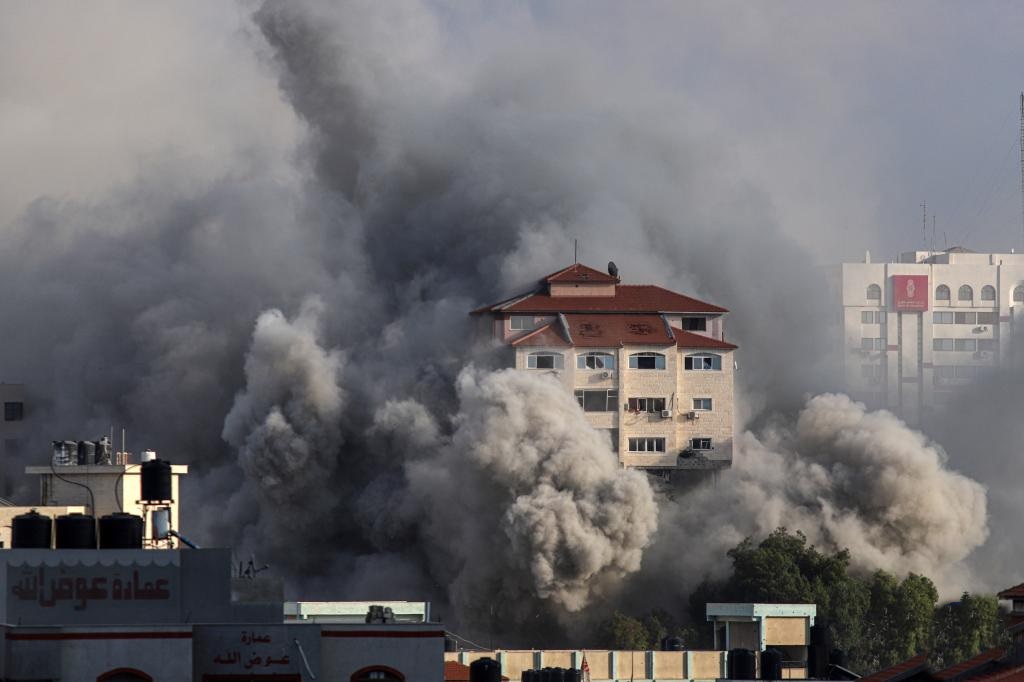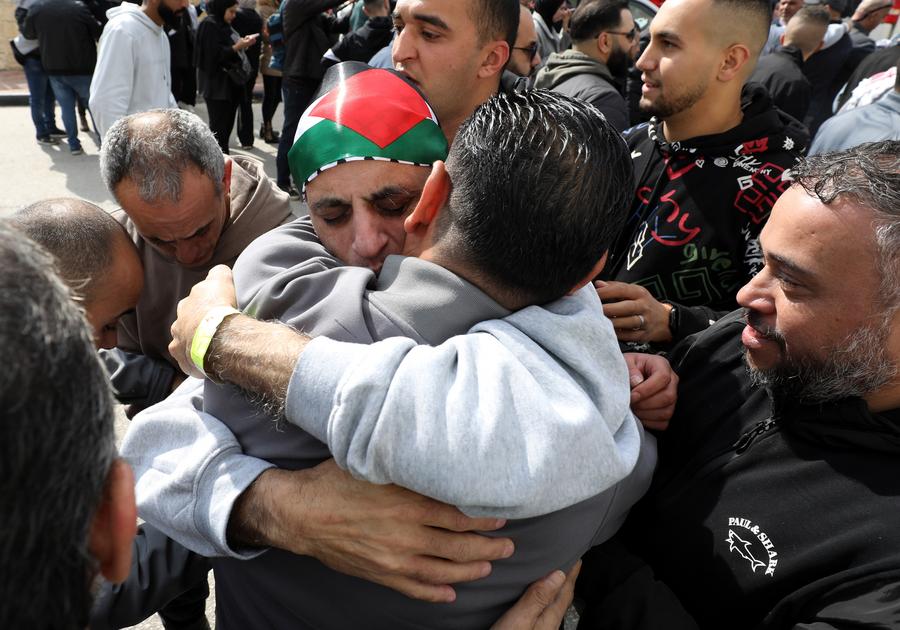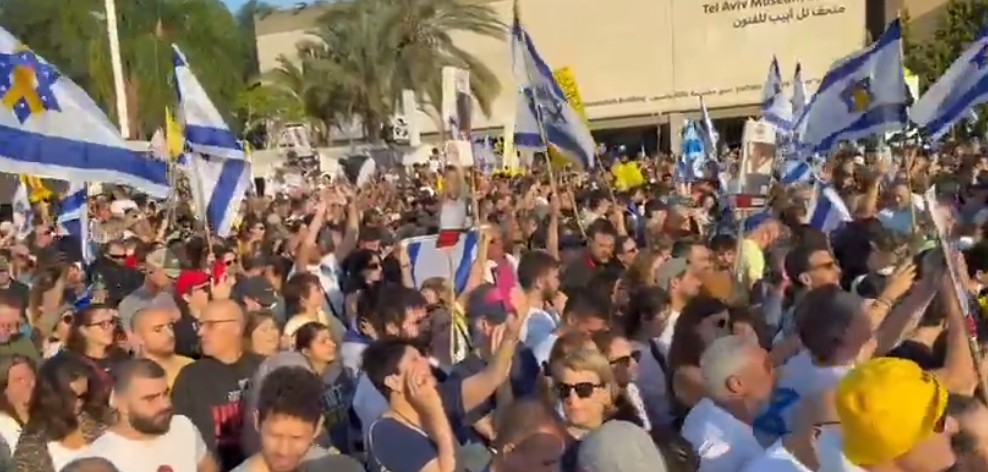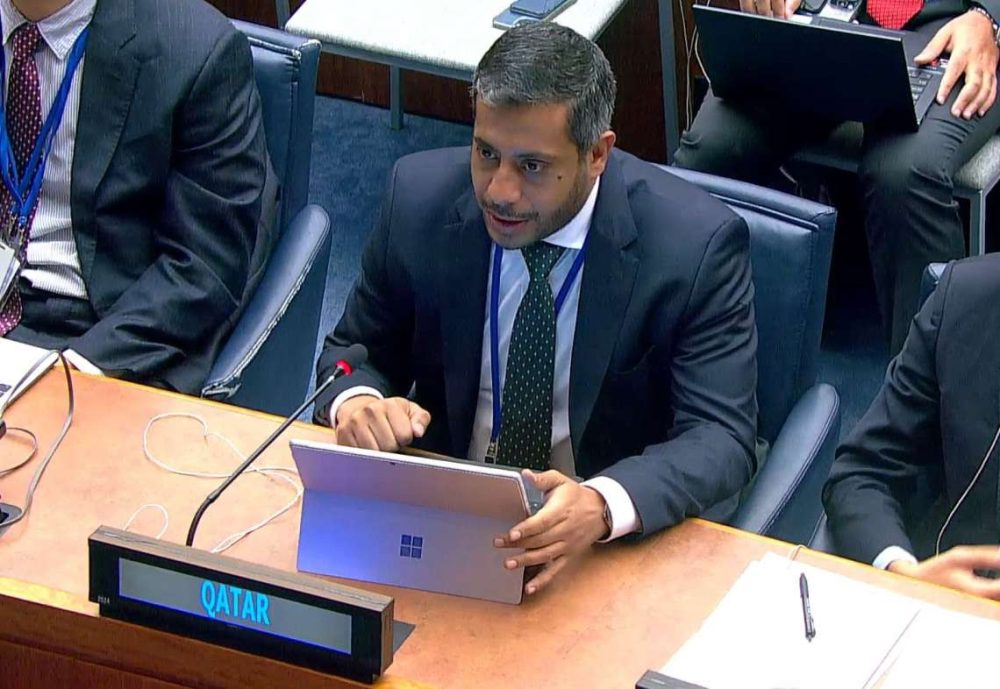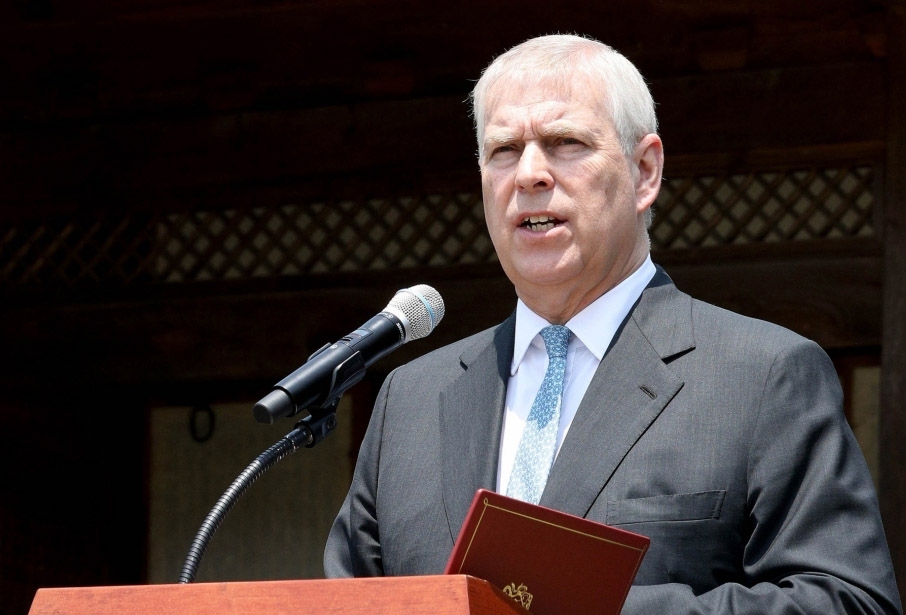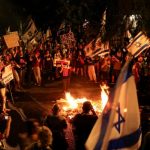As the war escalates, civilian casualties will be a lot higher, especially if Israeli Defence Forces carries a joint operation to re-take Gaza, writes Anant Mishra
In the morning of October 7, Hamas launched a multi-pronged coordinated attack against the state of Israel (as part of a larger/coordinated assault under Operation al-Aqsa Flood) seizing Israeli border towns across the volatile Gaza Strip. To support ground assault, Hamas fired thousands of rockets (with an intent to create chaos and overwhelm Israeli air defence system), cloaking the movements of their ground assault. This gave ground forces critical time to neutralise Israel’s electronic border alarm system, making their way through the border outposts, disarming electronic barriers/fences, and entering key urban cities from motorised gliders hovering above the intended target. Some reports pointed towards an incursion by sea. That said, by late afternoon October 7, Israel was under attack from land, sea, and air.
By late evening, Israeli Air Forces dominated the skies, conducting strikes at the Gaza Strip, bringing down several high storied buildings sheltering Hamas fighters and key leadership. Air to Ground operations continues till date, with air strikes still being heard by locals as the author pens these analyses. With air domination, Israeli Defence Forces began mobilising in the south; with a task to retake border villages, small towns under Hamas control. The operation lasted for a full 24 hours, with some sources within the IDF calling the mission to be nearly complete. It is highly likely to predict the next phase, but according to the IDF deployment posture, large scale assault on key Hamas HQ is eminent to rescue the hostages, cutting the group down permanently, denying its elevation to power once and for all. As the author pens, the IDF has deployed numerous aircraft to pick reservists from across the globe, pointing towards a large-scale invasion/assault in the next coming hours.
With an Israeli invasion in sight, civilian collateral is going to increase even further, as IDF begins an assault. As the war escalates, civilian casualties will be a lot higher, especially if Israeli Defence Forces carries a joint operation to re-take Gaza. This is also evident from the Defence Minister Yoav Gallant announcing supply closure for electricity, food and fuel into Gaza, pointing towards a siege. His statement reinforced Prime Minister Benjamin Netanyahu’s vow to reduce Gaza into rubbles, warning Palestinians to cross over Egypt and leave the city.
In the context of Hamas’s previous skirmishes with the IDF, their actions against the state of Israel were truly incomprehensible, unpredictable, aggressive, and out of military behaviour. It was first of kind assault on Gaza in such sheer numbers, and first of a kind assault on adjacent Israeli communities, an unprecedented unthinkable approach even for the greater Arab army, in previous wars. For a wave of first, Palestinians took numerous military personnel and civilians as hostages, transporting significant unknown numbers into full load trucks possibly to Gaza. Their ability to overwhelm Israel’s electronic border system proved disastrous to its national security, exposing critical vulnerability reinforced by systematic strategic failures from intelligence communities, evident from Hamas ground forces penetrating urban cities.
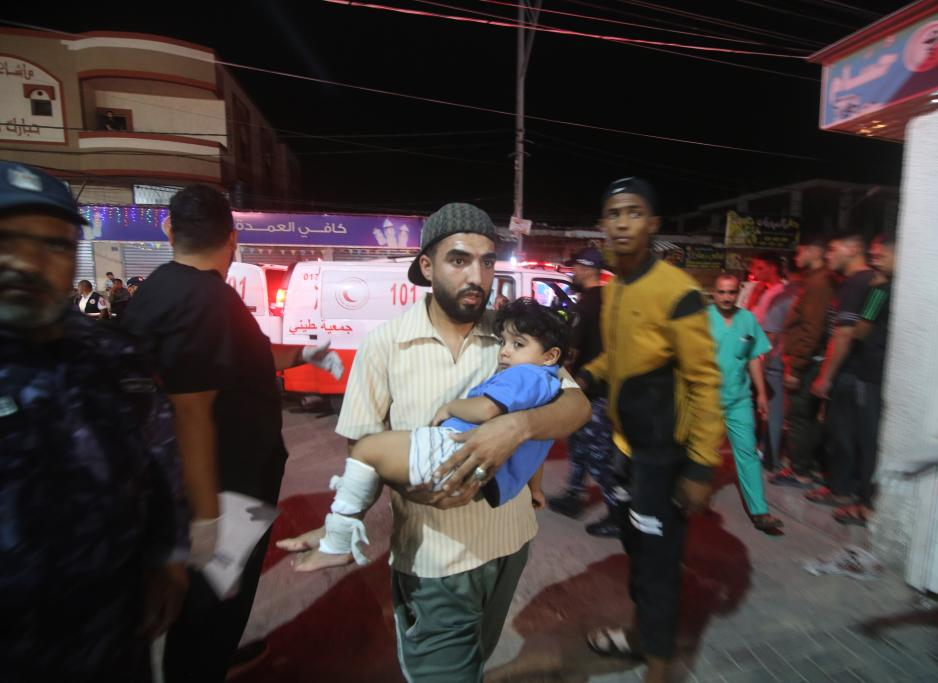
A reflection of 1973 Yom Kippur War?
From the preliminary response, Israeli intelligence apparatus was caught off guard, without a huss or a tell, with evidences floating in the media pointing towards a key leadership denying Hamas’ possible attack in the wee hours of the latter’s assault. The attack reminds us of the 1973 conflict, locally known as the October war, militarily the Yom Kippur war, when the combined Egyptian and Syrian armed forces punched through the Israeli defence outposts, bringing Tel Aviv under extreme psychological pressure. On October 6th it completed 50 years of the war (at least for those who were young enough to remember it or participated in it), a memory that Hamas remembered (eve of assault). Israel was not threatened by conventional forces, but proxy militants affiliated to Iran and Hamas sympathisers, volunteering for a prolonged-Fauda (chaos).
In ensuring that its initiative succeeds, the Hamas could have prepared for at least a year, learning how to keep below the radar of Israeli’s finest technology driven security and intelligence ecosystems operating in the occupied territories.
In the end, a combination of factors imparted a certain lethality and barbarism to Hamas ground assault.
Picking the day? Jewish Holiday
The attack took place on a Jewish holiday. But Hamas may have studied/closely monitored concerns/movements of various divisions within the IDF, such as the perception of great threat emanating from Hezbollah in Lebanon and deployment of troops to defend Israeli nationals and prevent Palestinian incursion in the West Bank.
Impact on Military morale
During the author’s discussion with former military leaders and scholars, there was constant debate within the IDF on the issue of overhauling the judicial system, which may have affected morale at multiple levels.
Overconfidence in the IDF or underestimating Hamas?
The response from the IDF points towards an inherent overconfidence within the ranks or perhaps a naivety to undermine Hamas’s capability of conducting assault of this magnitude putting it roughly impossible to be carried out, at least within the minds of key leadership in Israeli security establishments. With the technology might reinforced with superior training and tactical efficiency that literally, before Hamas assault, outmatched the latter, made Israeli Defence Forces invincible.
A perfect timing?
As the Hamas assault unfolded, Mohammed al-Deif, the military commander of Izz al-Din al-Qassam Brigades, delivered a speech justifying the attack as a response to the situation around al-Aqsa mosque in Jerusalem, highlighting delipidated state of Palestinians in Israeli prison. Tensions were already running high, escalated, with more than 5000 Jewish worshippers made way to the Temple Mount (which is also the site of Al Aqsa) to pray during the Sukkot, to some readings, violating the Status Quo understandings between Israel and Jordan (with custody of Jerusalem’s Muslim and Christian holy sites).
This resulted in Palestinians protesting along the security fence, but in comparison to the matters of prayer at Al Aqsa or Palestinian rights in Israeli prisons, the protest, was simply out of the ordinary. The escalation/aggression and time sensitivity of the assault points towards months of planning and coordination within multiple proxy/militia groups even beyond the capability of Hamas to trigger.
That said, Hamas may have chosen a particular moment to strike. With domestic divisions in Israel reinforced by Israeli security establishments decision/perception to undermine Hamas, the moment presented itself to be seized. That said, there is no evidence that reflects the impact of Russo-Ukraine war on Hamas or on its decision to carry an assault at a particular time. Instead, Hamas may have studied the implication of a peace treaty or multilateral engagement for temporary peace instituted either by the United States, Qatar, or Saudi Arabia between Israel and Palestine over normalisation of relations; Hamas and Palestinians generally fear that such an arrangement can only push their cause further down the global agenda.
Any peace agreement would have proved their efforts counterproductive, decreasing trust and faith within their proxy militias and sympathetic nations. That said, domestically Hamas could have been receiving backlash/criticism from some of their staunch supporters for feeble response against multiple Israeli sieges. This could have resulted in loyalist/sympathisers protesting Hamas.
That said, it is still too early to predict Hamas’s endgame. Its leadership would have anticipated Israeli military response, which could result in complete destruction of Gaza, perhaps bringing end to Hamas’s occupation in the enclaves once and for all. The brutal murder and kidnappings of military personnel, families, which are the but collateral of a war, would slide even the staunchest Hamas/Palestinian supporter initially in the war.
Hamas would want to lure Israeli Defence Forces in a ground assault. Perhaps holding hostages could delay large scale ground-based incursion for a few hours, giving enough time for Hamas social media components to call for a unified response against Israeli forces. The group may hope for Israeli ground forces to maintain a Forward Operating Base (FOB) in Gaza – giving Hamas necessary ammunition to reinforce guerilla troops in the West Bank. For Hamas 1973 Yom Kippur War reminds of a long-term truce, forcing Israel to surrender Sinai, a transformative point which Hamas may hope for Gaza to be returned for long term peace.
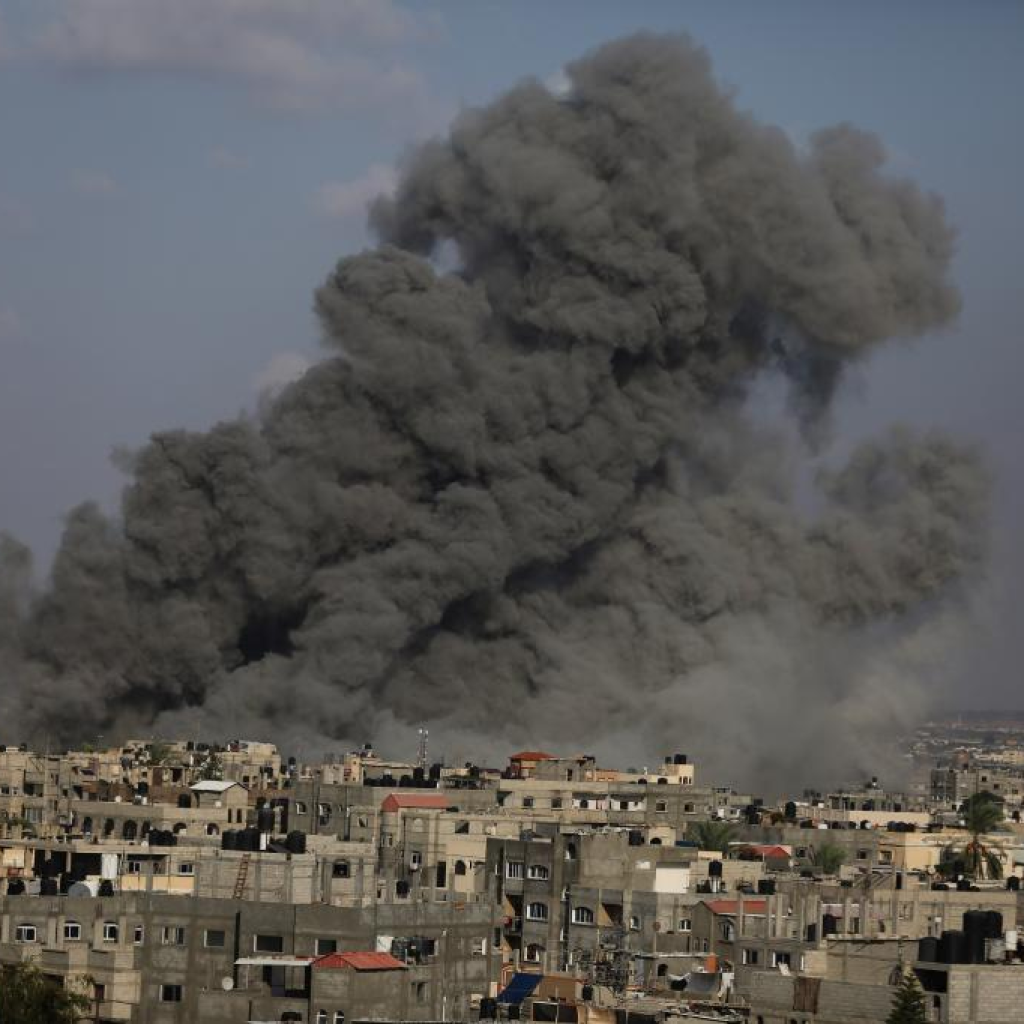
Predicting Tel Aviv response
In military operations there are no bad options, the success is largely defined by the ability to achieve expected outcomes, quickly!
Option 1: An Israeli Ground Assault
Israel has encircled Gaza with an intent to push Hamas militants and retrieve as much as hostages as possible. From its side, Hamas may still have certain hostages it could use as a leverage against negotiation with Tel Aviv, which it may move constantly from time to time. According to Israeli military sources, over 1500 Hamas militia have been killed or bodies recovered – Hamas may use Israeli captives as human shields, making it challenging for Israeli defence forces in a close quarter battle. That said, Israel have cut off electricity supply to the enclave, and the water supply is halved. It is yet to see how the situation enfolds.
Option 2: Lebanon opens door to Hamas
From the neighbouring side, Hezbollah may encourage Hamas sympathisers in Lebanon to join the war, opening a second front in the north, as part of the 2021 Gaza war play book.
Initially, Hezbollah made statements on closely monitoring the situation while engaging with the Hamas leadership directly in real time. However, it is widely known for Palestinian militants/sympathisers in Lebanon—belonging to any of the militia need Hezbollah’s approval to join the war. It is highly likely for Hamas to conduct/coordinate such an operation without Hezbollah’s support, and must have at best Hezbollah commanders, not engaging but directing military leadership in Hamas or coordinating reinforcement from Lebanon. It is highly likely to find evidence that connects Hezbollah with Hamas or paints the former as key instigator of Operation al-Aqsa Flood, at this hour. But there are plenty of evidences which point towards been the sole benefactor of this war, providing critical means and mechanism (transfer of technology) and military expertise, while cheering for Hamas victory from the sidelines. With intelligence institutions in Europe particularly US fighting against time to find the ‘smoking gun,’ the policy debate is already shaped in the favour of Iran being the sole architect. That said, the Israeli security establishments has yet to confirm the Iranian role.
Option 3: Coordinated attacks from Hezbollah & Hamas
Putting aside the speculation of Iranian involvement in the war, the rational of coordination between Hezbollah and Hamas is potentially feasible and the thought of two groups operating together is very real. During the 2021 Gaza War, Hamas and Hezbollah coordinated through a joint operations command, bringing Hezbollah expertise at Hamas disposal; The presence of Hezbollah provided strategic legitimacy to Hamas fighters on the ground and tactical deniability for Iran to merely shadow its presence as speculation. From this attack, the coordination could go further deep. Taking note of Hamas’s ground force operation Hezbollah could have provided technical mechanisms, support groups on the ground, with the intent to create havoc in the West Bank and potentially enter Jerusalem, perhaps targeting certain sites through homing beacons, relaying signal to Hezbollah rockets stationed in Lebanon. The challenge would have been to limit the war within proximity of Israel, preventing any spill over in Lebanon. That said, Hezbollah fired rockets at Sheba Farms in the southern region of Lebanon, with Israel retaliating in the agrarian regions of southern Lebanon, escalating confrontation to a dangerous level, which could spill out of control anytime.
(Anant Mishra specialises on Afghanistan, where he has served three combat deployments. He was adviser to key military and civilian leaders of the Ashraf Ghani government. Views expressed are personal and exclusive to India Narrative)


